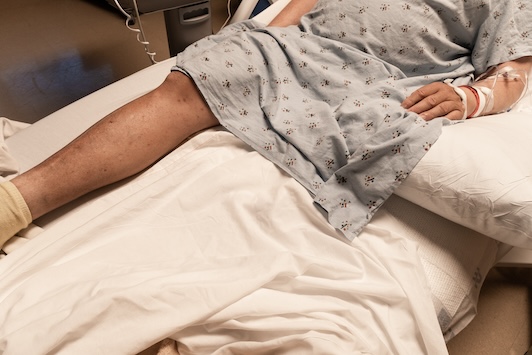After a lower-extremity amputation (LEA), an improved continuity of clinical care – particularly integration within primary and specialist care – would better assist in the management of LEA and related conditions, suggests a new study.
“After a LEA, patients were more at risk for emergency-department (ED) visits and hospital readmission within a year of initial discharge if they had higher comorbidity (two or more medical conditions) and lower continuity of care,” says Dr. Sara Guilcher, lead author of the study, and senior adjunct scientist at ICES, affiliate scientist at the St. John’s Rehab Research Program at Sunnybrook Research Institute (SRI), and Associate Professor at the University of Toronto.
Recently published in PLOS One, the researchers found that overall, 62 per cent of patients with a LEA visited the ED, and 60 per cent were re-admitted to acute care within the year.
The most common reasons for acute re-admissions and ED visits related to infections (urinary tract, pulmonary and sepsis), congestive heart failure/myocardial infarctions, diabetes, chronic obstructive pulmonary disease, and wound-related care. Persons with LEA were more at risk for ED visits if they had higher comorbidity, lower continuity of care, and living in areas of lower income.
Common risk factors for rehospitalization included having lower continuity of care, increasing comorbidity, and having a diagnosis of chronic obstructive pulmonary disease. However, sex differences were also identified, with females being at risk for re-hospitalization if they had a previous diagnosis of a mental health condition.
“LEA is a life-altering procedure, with significant negative impacts to patients, care partners, and the overall health system,” adds Dr. Sander Hitzig, senior author of the paper and program research director & senior scientist for the St. John’s Rehab Research Program at SRI. “There is a need to improve transitions from the acute setting to next point of care to ensure care is coordinated and integrated for persons with LEA who are more at risk.”
The study was funded by the Physician Services Inc. Foundation and the Ontario Association for Amputee Care.


